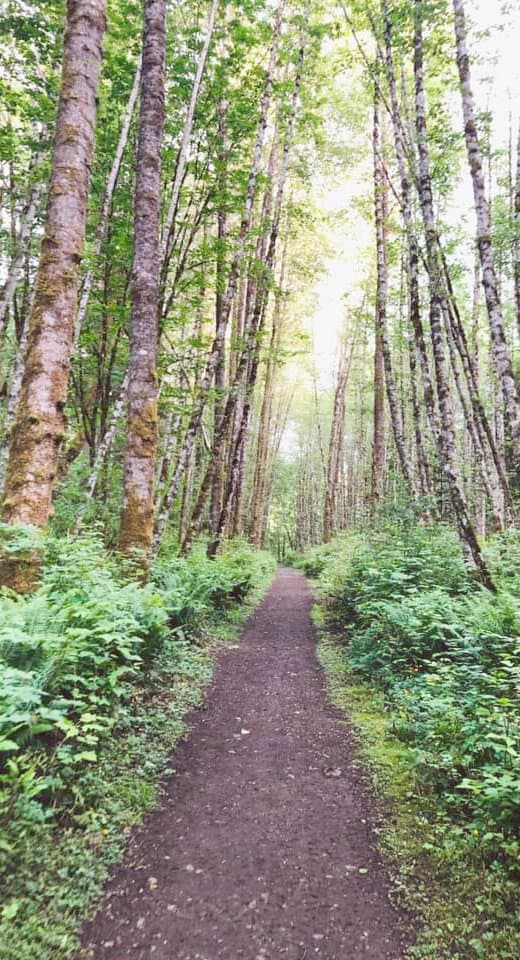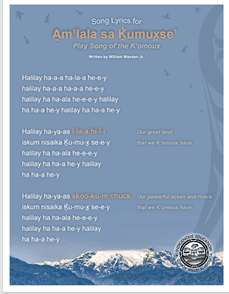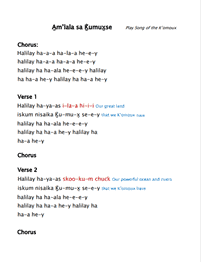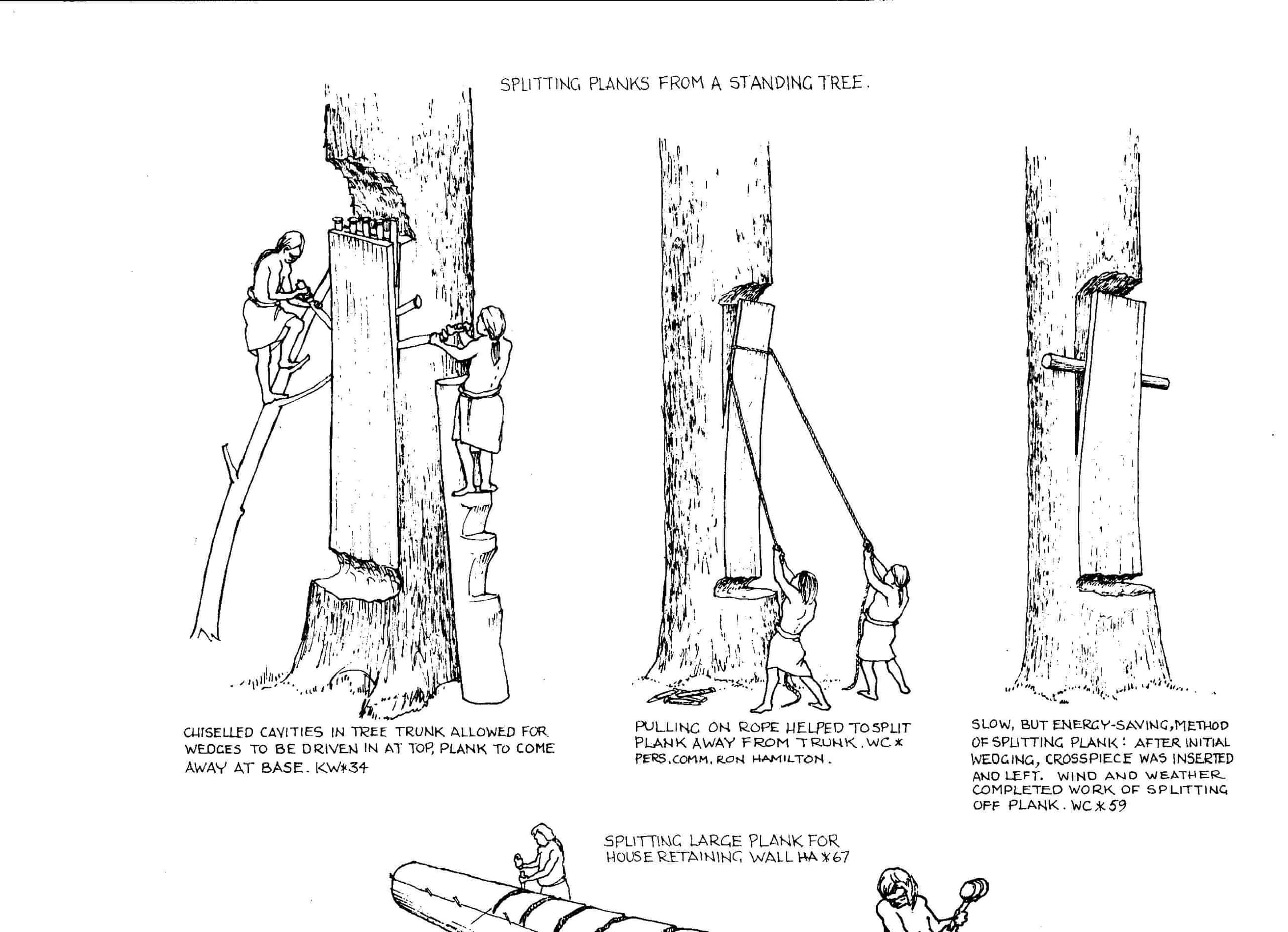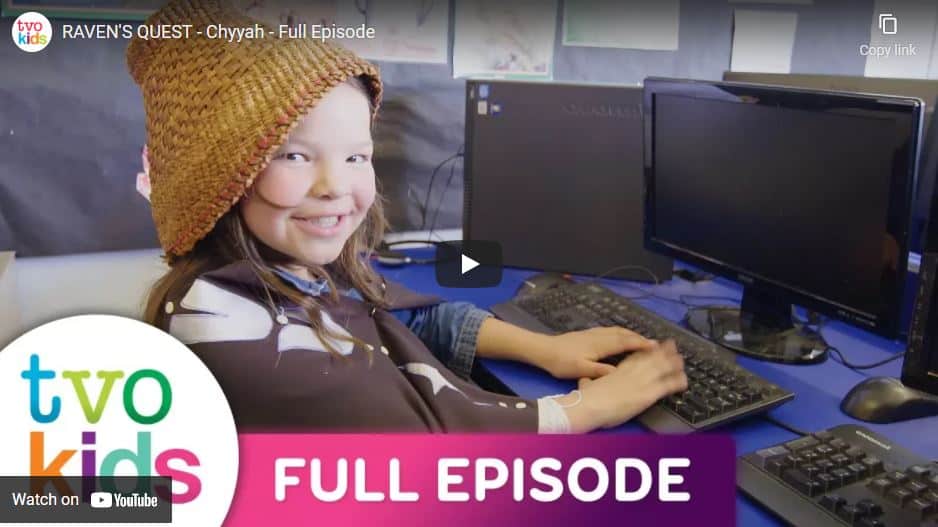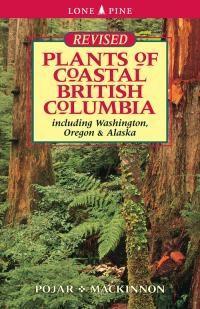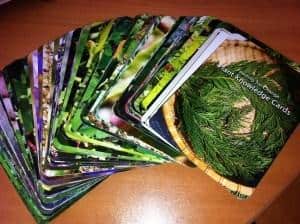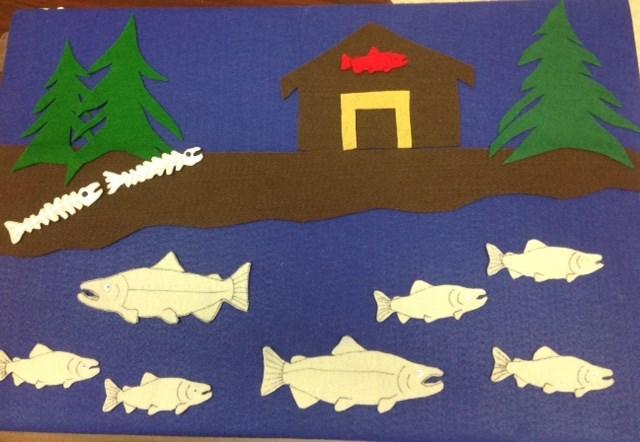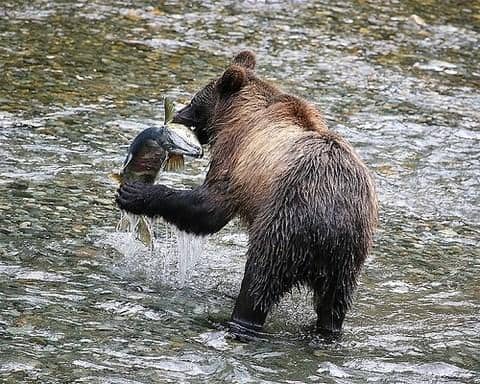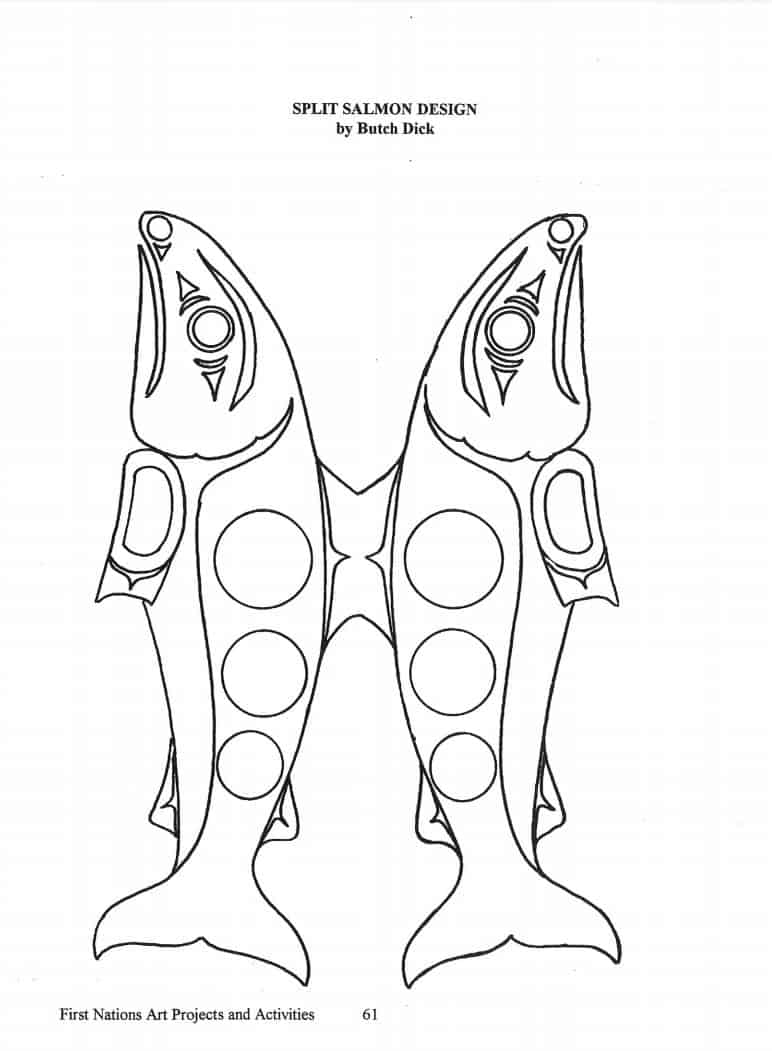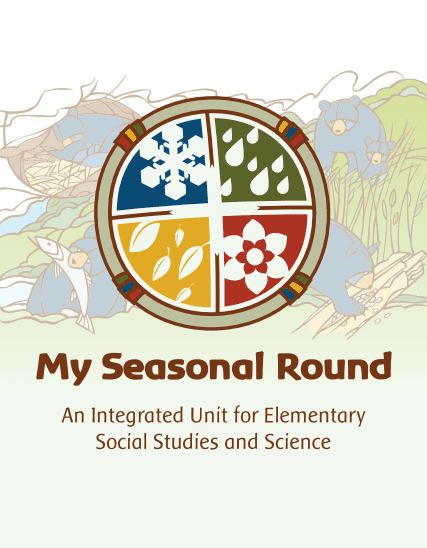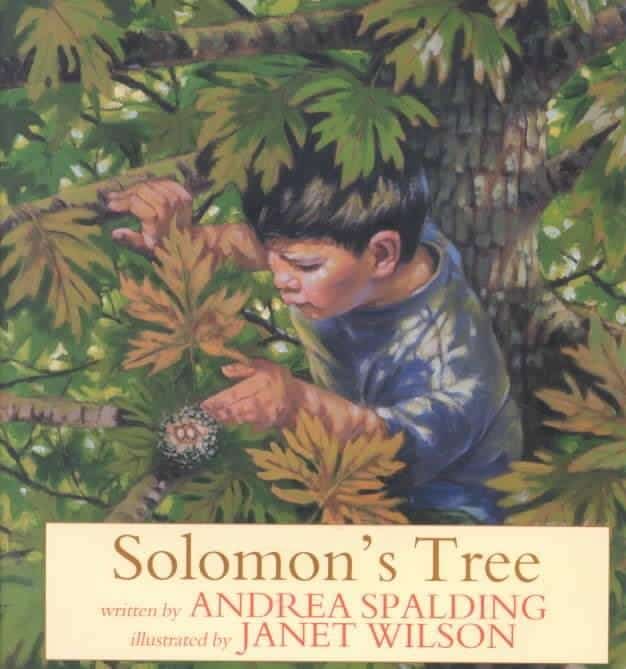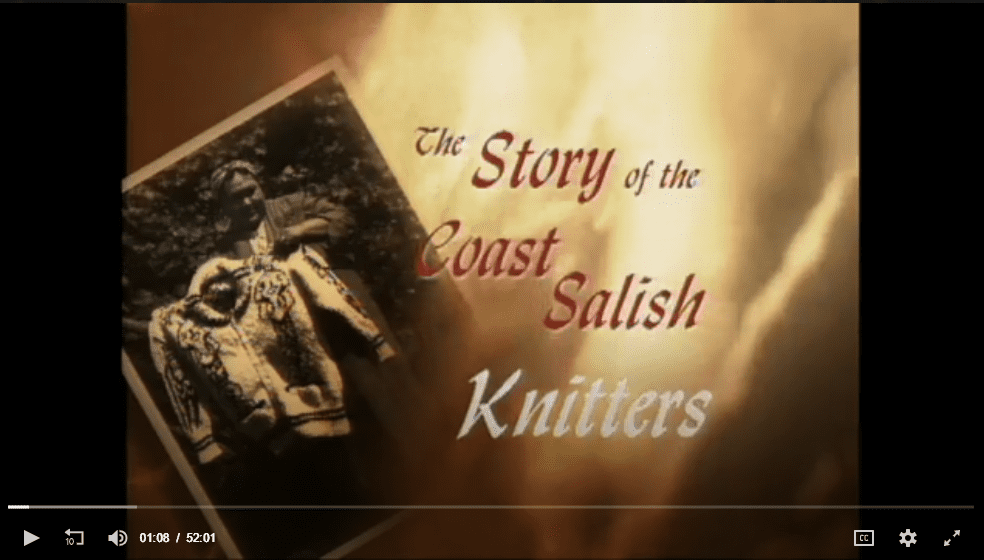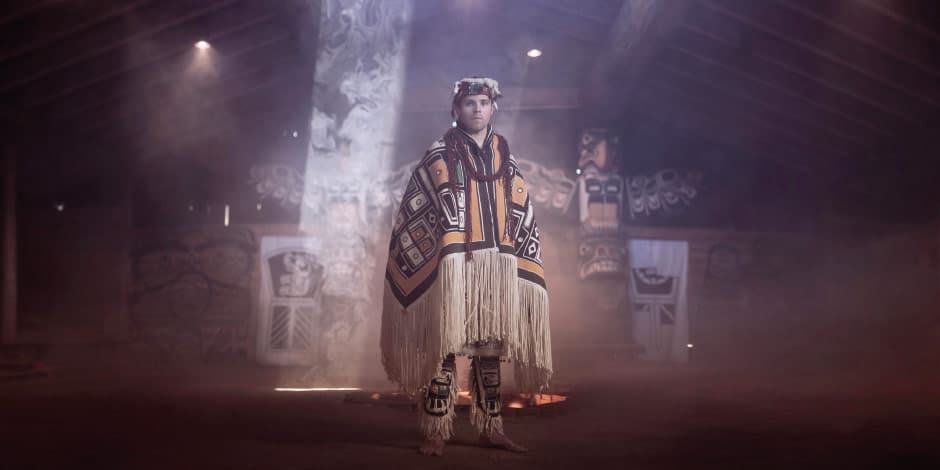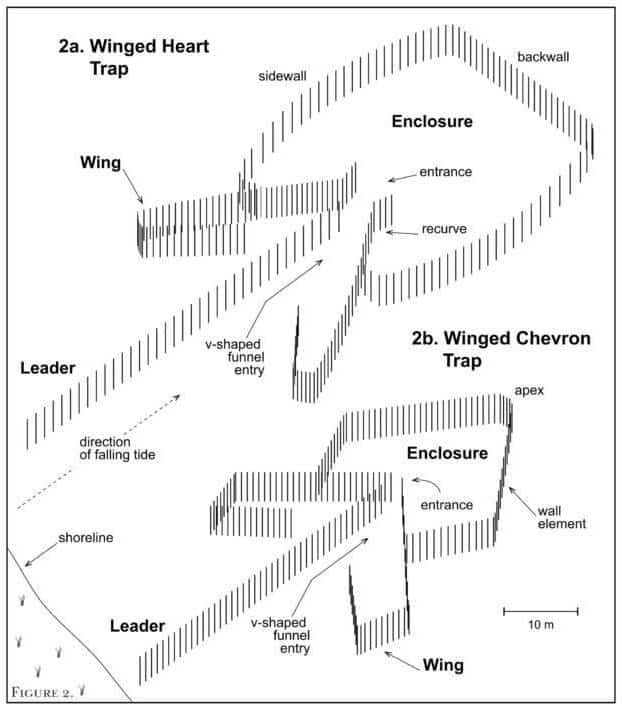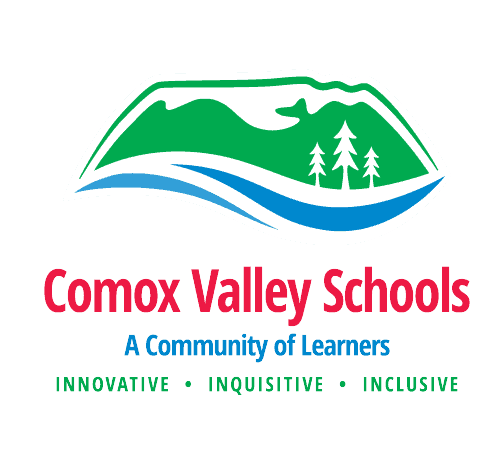Land and Sea Resources
A̱m’lala sa Ḵ̓umux̱se’
A̱m’lala sa Ḵ̓umux̱se’
Song History
A̱m’lala sa Ḵ̓umux̱se’ was created in July 2018 for Indigenous Education (School District 71) to be sung by all students to celebrate Kwakwaka’wakw culture and language. A̱m’lala sa Ḵ̓umux̱se’ translates as ‘Play Song of the K’omoux’ and speaks to the great land “ila a hii” and the powerful ocean and rivers “skoo kum chuck” that are here within the lands of the K’omoux. The song was released into our School District in a ceremony held during a Professional Development Day on February 15, 2019.
Use of Song Protocols
• Acknowledge the creator of the song (William Wasden Jr) from Alert Bay, British Columbia.
• Share the history of the song (see above description).
• The song must be respectfully used in the style / format it was released (no changes).
Song Creator: William Wasden Jr. Bio
William Hiłamas Edward Wasden Jr. Waxawidi “Canoes Come to His Shore” was born at ʼYalis (Alert Bay) British Columbia on October 14, 1967. William is a member of the ‘Namgis Nation “Nimpkish Valley Tribe”. William carries many names and dances that have been bestowed on him by various sides of his families. William is also a descendant of the Cook, Wanukw, Hunt, Alfred, Harris and Innis families. He can also trace his ancestry to the Tłingit of Alaska and the Mowachaht of the West Coast.
William has taught most of his adult life in the majority of schools in the unceded Kwakwaka’wakw territories. He also ventures to share his knowledge of song composition with other nations along the coast.
William continues to teach all that he knows to the next generation of Kwakwaka’wakw. For many years, William has worked at the U’mista Cultural Center at Alert Bay BC as a researcher and cultural advisor. Recently, he has been rehired to return and continue work in language and history documentation for the Kwakwaka’wakw Nation.
For a full printable bio, click on the following link: William Wasden Jr Bio
Songkeepers
Yolanda Lehton
Sally Sheehan
Jesse Everson
Colleen Devlin
Alex Jules
David Dawson
JoAnn Restoule
Animals
Importance of Animals
Lesson 1
Learning Intention: I can describe how animals are important in the lives of Aboriginal people. I can reflectively about what I learned and show what I know.
Teaching Plan:
Animals Lesson 1 Blackline Masters
Blackline Masters
“What I Know’ Journal and Traffic Lights
Animal Journal Page and Traffic Lights
Lesson 2
Learning Intentions:
-
- I can describe how Aboriginal people used all parts of the animal.
- I can write reflectively about what I learned to show what I know.
Teaching Plan 2
Alternate Lesson #1: Using all parts of the animal.
Fur Kits
There are kits in our LRC that have fur samples in them. For SD71 staff, search Fur Trade Kit in Destiny.
In the following PowerPoint you will find some of the animals that people gathered furs from
Animals of the Northwest Coast and what they symbolize for First nations people.
Power Point by Shannon Campbell.
- Animals of the Northwest Coast First Nations
- Northwest Coast Animal Symbols and Kwakwala
- How Are Animals Important to People
Eagles
Eagle Visualization – from the book Keepers of the Animals, pg. 56
Cedar: Tree of Life
Cedar Artifacts- I notice, I think, I wonder…
an engaging way to start an inquiry/learnings about cedar
Cedar: Think, Notice, Wonder
Cedar Weaving
Harvesting Cedar
Special Note: There are protocols that go with collecting cedar bark. Some things to consider about cedar collection is that the people who collect cedar are from the local nation, have been taught from an elder, know how and when to do this without harming the tree in that specific area. Cedar is considered sacred for many.
Kits from SD71 Learning Resource Center that contain cedar artifacts: (search on Destiny with the following titles)
Cedar Bark Harvesting Kit
A display of photographs, b+w drawings, and cedar samples help illustrate the steps traditionally used by First Nations peoples in the harvest of cedar. Traditional cedar bark uses: hats, baskets, blankets, ceremonial regalia, nets, masks, mats, headbands and clothes. This kit can be used in support of Aboriginal science and social studies learning outcomes.
Bentwood Box
Several cedar items, bentwood box, ladle, rope, eagle head, bailer, headbands, bowl
Totem Poles of the Comox Valley (this could help facilitate an excellent field trip around the valley looking at all the totem poles)
This resource features photographs and information about the totem poles of the Comox Valley. Totem poles are a traditional way of telling the stories of Aboriginal families and clans, and of keeping records of important historical events. The six West Coast First Nations that carved totem poles before the arrival of the European explorers were the Haida, the Nuxalt, the Kawkwaka’wakw, the Tlingit, the Tsimshian and the Coast Salish people.
Coast Salish Realia
This kit contains samples of Coast Salish carvings, baskets, a spindle whorl, and tools.
Coast Salish Artifacts
“Keepers of the Earth” a collection of native stories and environmental activities for children, 2 CDs “Rising from the ashes…” and “One nation One Voice: songs of the Kwakwaka’wakw”, 1 woven cedar hat, 3 wooden carvings -kingfisher, salmon, and loon.
War Canoes Model
Carved by Stephen Hunt, a member of the Kwakiutl Band of Fort Rupert, B.C. One model is decorated with a Thunderbird image, the mythical creature considered to be the most powerful of all spirits. It is believed that the Thunderbird’s powers came from the carved appendages on his head. The other canoe is decorated with the eagle image.
Cedar the Tree of Life Kit
Bark and rope artifacts along with cedar reader booklest and Little Cedar, Big Cedar by Pam Holloway
The Story of Cedar (short clip below) by Herb Rice
For the full documentary click on link directly below:
The Story of Cedar, Bark Pulling and Cedar Hat Weaving
Published on Dec 9, 2012
From the moment of birth, to the time of passing, cedar has traditionally played a vital role in the life of the First People of the Pacific Northwest.
This 30min documentary tells the story of cedar, how the bark is stripped from the cedar tree and prepared for cedar weaving (hats) and discusses the art of cedar weaving and the affect this workshop had on the participants. Project was facilitated by Maria Sampson. The video was produced by Louise McMurray and the Cowichan Aboriginal Film Festival and directed, shot and edited by Phil Ives.
Cedar – Tree of Life Kit – found in SD71 LRC -primary focused
Contents: books: The cedar club forest detectives — Making a canoe — Cedar — Making a drum — The western red cedar — The cedar tree: the heart of our people (2) — Cedar – tree of life — The little cedar tree — Little cedar, big cedar — 10 booklets: The bentwood box — French books: La technologie des Premières Nations — Grand-mère, gardienne de notre passé — Les Premières nations — Sun design colouring page — Rain design colouring page — 20 photo cards: cedar and its uses — 6 photo cards: steps to make cedar rope — 2 bundles of cedar strips, narrow — bundle of cedar strips, wide — 2 bundles of cedar rope — cedar plank.
Growing Your Green Heart (primary focused)
A guided imagery – fantasy journey to find the seed in your heart. One of the many activities from this book, Keepers of Life. Could be followed up by a writing, drawing or painting activity of the plant they imagined themselves to be.
Cedar the Tree of Life
From Nelson Literacy Grade 4 student book A
Cedar by Hilary Stewart
This book by Hilary Stewart has many hand drawn examples of cedar artifacts and how they were made and used. Below are some examples from the book that Aboriginal Education has compiled for teaching purposes:
Big Houses of the Northwest Coast – 3 types
Fishing Tools
Fishing drawings by Hilary Stewart
The Story of Cedar
This video showcases what role a cedar plays in the culture of Shishalh people. It played in the Tems Swiya museum as part of the tree of life texemay exhibit during the 2015 Sechelt Arts Festival.
Making a Cedar Rose
Making a cedar rose from Hakwush on Vimeo.
Nuu-chah-nulth Canoe Steaming
Master Nuu-chah-nulth canoe carvers Joe and Carl Martin steam a dugout canoe on Chesterman Beach, Tofino, Vancouver Island, British Columbia. Film and Narration by Jacqueline Windh.
Fieldtrips
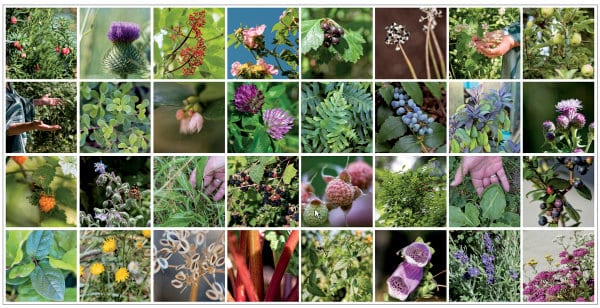 |
North Island Hospital Art Project
“The CVAG creative team took on the project of conceptualizing, designing and producing artwork for the new North Island Hospital in the Comox Valley. CVAG’s Community Space features a design project for art at the new North Island Hospital in Courtenay. We worked closely with the North Island Hospital Art Project, K’ómoks First Nation, Elder Barb Whyte, other local artists, plus students, parents, and educators from Queneesh Elementary School.” |
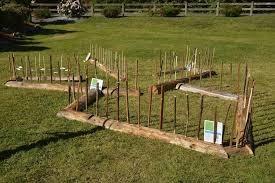 |
Fish Traps |
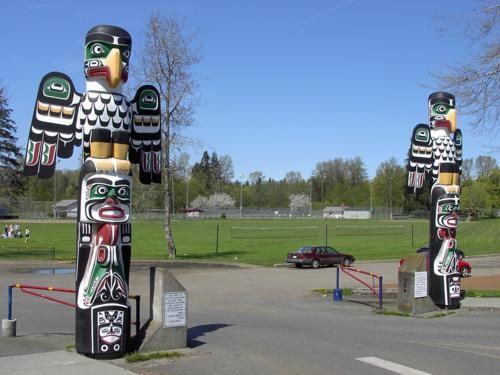 |
Totem Poles of the Comox Valley
Visit the totem poles throughout the valley. Check out the Totem Pole kit found in the SD#71 LRC (Search for Totem Poles of the Comox Valley). Most totem poles in the valley are documented with the history, location, and carver identified. |
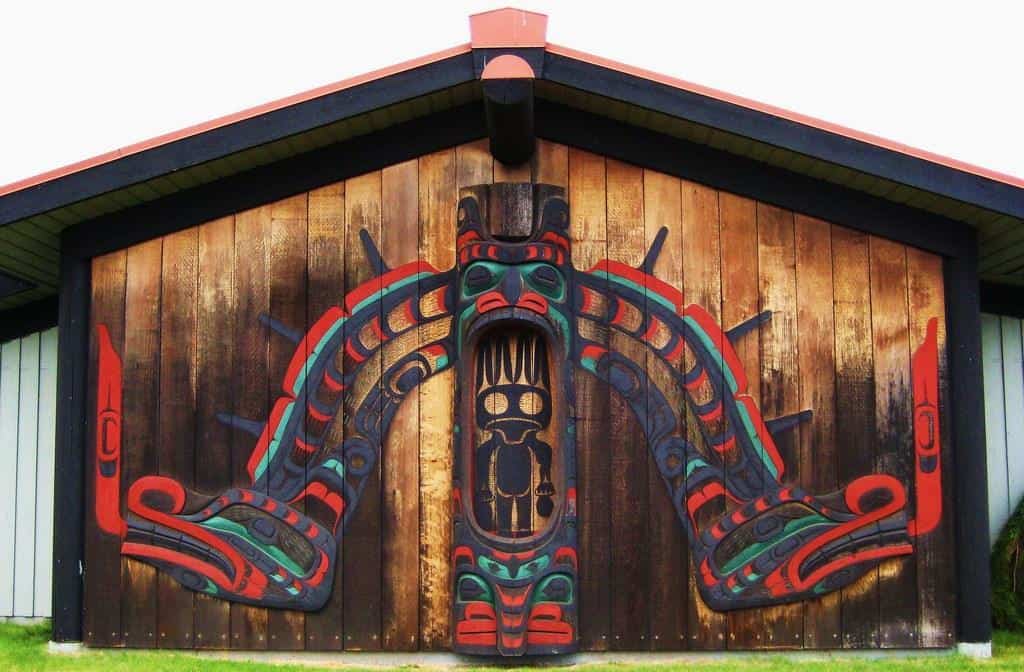 |
I-Hos Gallery
“I-Hos Gallery presents a collection of traditional and contemporary Northwest Coast artwork, including masks, prints, gold and silver jewelry, wood carvings and more produced by First Nations artists.
Our culture is expressed through our art. We are located between Courtenay and Comox on Vancouver Island, on the site of the original K’ómoks Village. We deal directly with all of our First Nation artists and provide you with all legends and artist biographies”
|
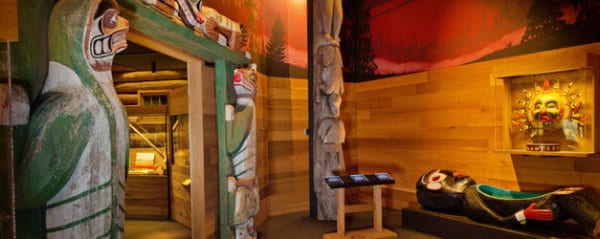 |
Campbell River Museum
“Exhibits in the First Nations Gallery will continue to evolve. When complete, the gallery will house displays that explore a number of themes relating to First Nations history in our area. These themes include a look at ancient and modern First Nations fishing methods, archaeological evidence covering 9000 years of settlement and the devastating epidemics of the 18th and 19th centuries.” |
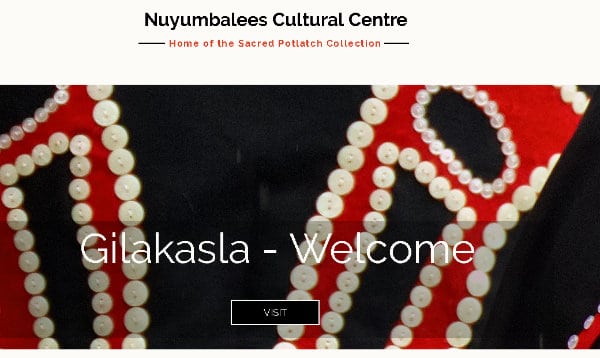 |
Nuyumbalees Cultural Centre
With its 15 original members, Nuyumablees was the first facility of its kind in Canada designed specifically to house a repatriated collection and be located on a First Nation Reserve. |
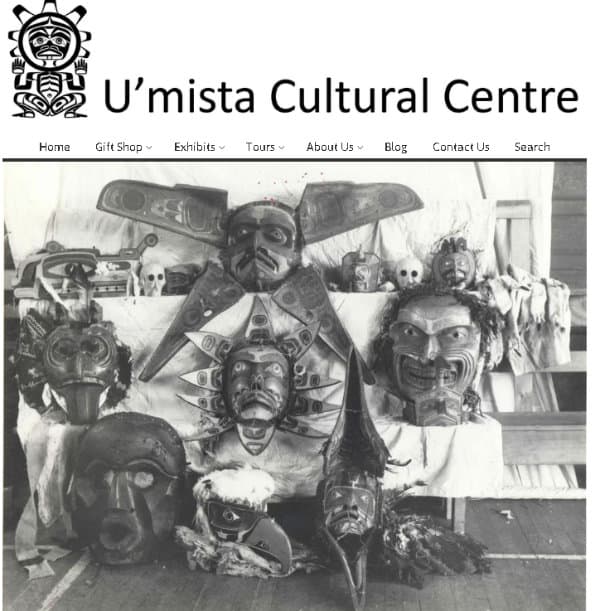 |
U’mista Cultural Centre
The mandate of the U’mista Cultural Society is to ensure the survival of all aspects of the cultural heritage of the Kwakwa̱ka̱ʼwakw. One of the objectives of the Society was the development of a facility to carry out the aims of the society. The present facility was opened in November of 1980. The focus of the permanent collection is the “Potlatch Collection”. The other permanent exhibits on display include description of the traditional ethnobiology of the Kwakwa̱ka̱ʼwakw and origin stories of the Kwakwa̱ka̱ʼwakw villages, as well as, historical and contemporary Kwakwa̱ka̱ʼwakw objects. Traveling exhibits of significance to the community are also displayed. |
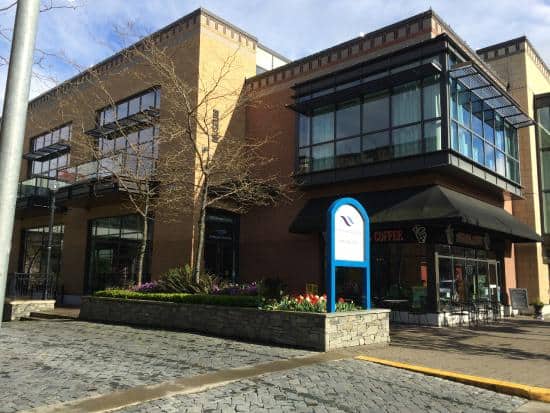 |
Nanaimo Museum
Guided School Program These exciting and interactive programs include a guided tour of one of the museum’s exhibits and a hands-on activity. |
Legend of Queneesh
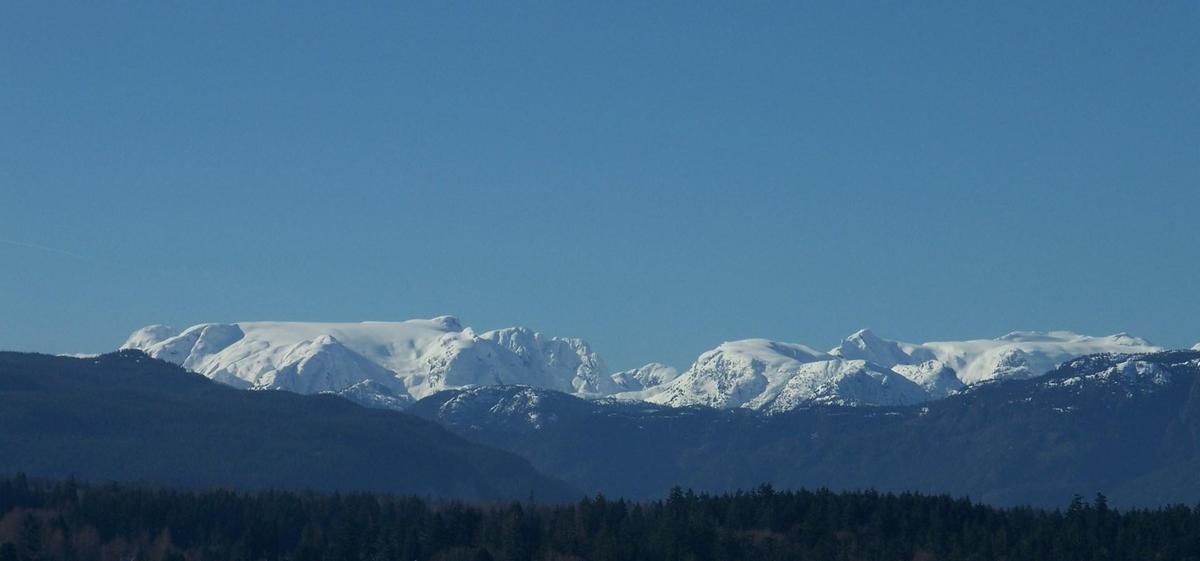 |
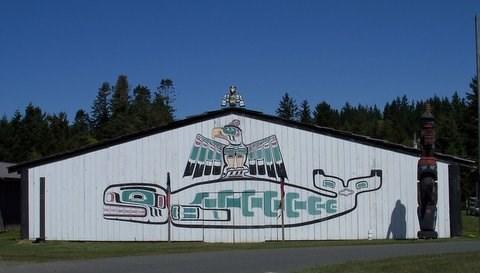 |
The long story in written form as told by Mary Clifton (written down by Barb Frank)
Legend of Queneesh English
Legend of Queneesh English Shortened by In Ed Staff
Legend of Queneesh French translated by French SD71 Committee
Legend of Queneesh French shortened by In Ed Staff and translated by French SD71 committee
The Legend of Queneesh Adapted for Storyboard by Shannon Campbell In Ed Staff
As told by Andy Everson, K’omoks First Nation
Artwork below also by Andy Everson.
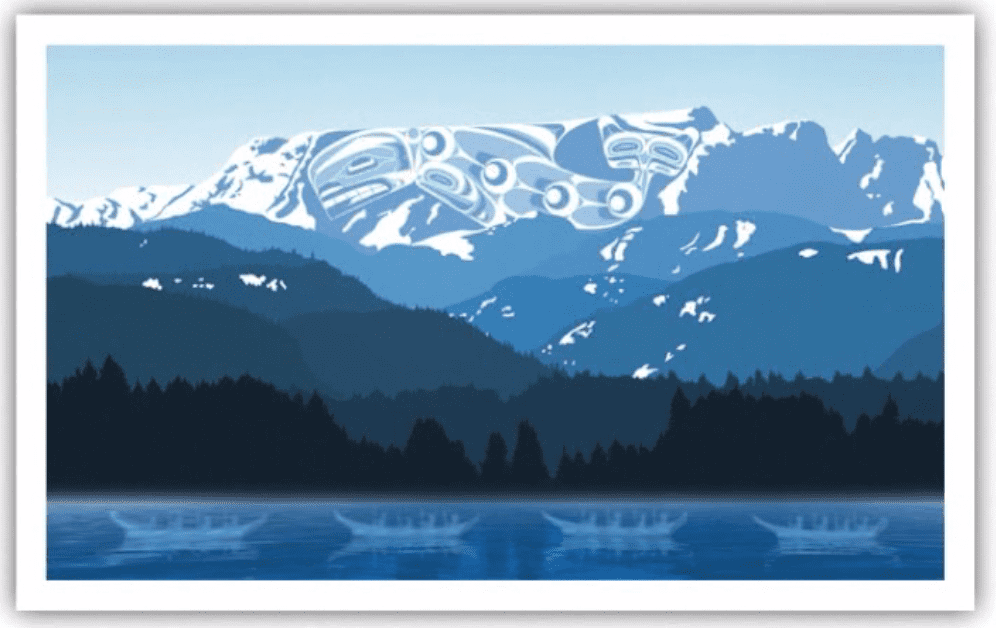
Legend of Queneesh Felt Story Board
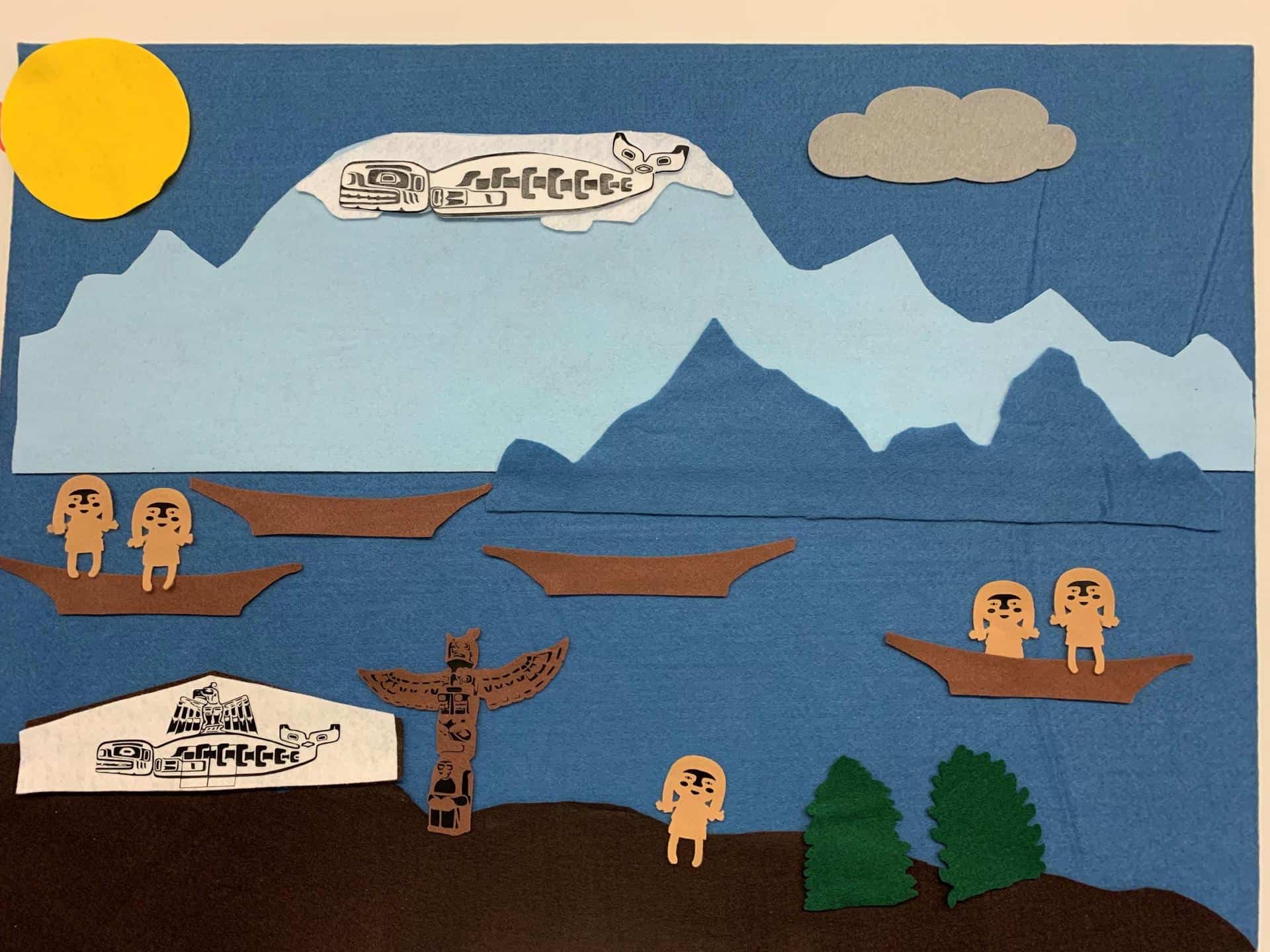
Qʷənɛs (click for pronunciation in Sliammon)
Whale
The Legend of Queneesh Adapted for Storyboard by Shannon Campbell In Ed Staff
West Coast First Nation Culture
To learn more about West Coast First Nation culture, get artifacts, realia and kits, incuding cedar items, into your room check out the resources we have at the LRC. Click here, Learning Resources Center Northwest Coast Realia and Information, for a summary of items at the LRC or go to Destiny to search for items.
Learning Resources Center North West Coast Realia and Information 2014
Plants
Respectful Harvesting Practices:
click here if you are thinking of collecting plants and/or wondering about Aboriginal protocol arounds harvesting.
Salad Pot Project
Indigenous Plant Healing from Island Health Magazine:
Local K’omoks First Nation member, Barb Whyte, and June Johnson from Cape Mudge talking about medicinal uses of local plants and the holistic nature of this knowledge. Note the connection to the First Peoples Priniciples of learning.
Outdoor Plant Scavenger Hunt
Made by Cheryl Graham, Indigenous Support Worker, Brooklyn
TVO Raven’s Quest – Chyyah
Chyyah is an 8-year-old girl from the NuChaNulth Nation, in Port Alberni, British Columbia. Chyyah loves arts and crafts; she shows us some of the beautiful projects she’s made. She participates in a school assembly where all the kids learn about their culture and honour the salmon, an important food for her community.
Plant lessons and Reference Materials:
Brooklyn/Highland
Brooklyn Forest Walk Notes with Suzanne Camp
NE Woods: Friends of the Lazo Marsh:
North East Woods Lazo Marsh Brochure
Reference Materials
Two excellent local plant reference materials with lots of Aboriginal knowledge included:
Plants cards can be ordered from this website.
Tea Time Lessons
Tea Info Sheets and Recipes
Salmon
Preparing and Smoking Salmon
With ƛ̓akʷapika, Lelaina Jules, one of our SD71 district curriculum support teachers.
Thinking Like a Scientist: A Salmon Inquiry
by School District 71 (Comox Valley). Thank you to Mrs. Bowley, Mrs. Dickson, Mr. Nowell, Mrs. Rehnby and their grade 1, 2 and 3 students for sharing their learning at Queneesh Elementary. Also, Doug David, Curriculum Support Teacher, Indigenous Support Worker, Sally Sheehan, Salmon Song by Indigenous Support Worker, Shannon Campbell
Thinking Like a Scientist: A Salmon Inquiry from Doug David on Vimeo.
Salmon BBQ
Vancouver Island and Coastal Communities Indigenous Food Conference at Cape Mudge
It’s hard to quantify the enormous impact a simple fish has had on the Aboriginal people of British Columbia. But the salmon has been a vital part of First Nations diet, economy and mythology for centuries.
Before European contact, salmon was an important trade item, and featured prominently in a wide variety of legends, art and spiritual ceremonies.
In some stories, salmon are considered returning relatives, further personalizing and deepening the connection to the Aboriginal people who depended on salmon for survival and sustenance. It was also a versatile food, which could be eaten fresh from a catch, or dried in a smoke house for the winter months… a tradition still practised today. Perhaps that is the ultimate lesson.
Elder Philips says the salmon reminds us of the struggles each of us has to go through, but it also continues to teach us about the past, the importance of honouring tradition and our own place in the cycle of life.
TVO Raven’s Quest – Chyyah
Chyyah is an 8-year-old girl from the NuChaNulth Nation, in Port Alberni, British Columbia. Chyyah loves arts and crafts; she shows us some of the beautiful projects she’s made. She participates in a school assembly where all the kids learn about their culture and honour the salmon, an important food for her community.
Salmon Smoke House Video
Watch the salmon smoke house video in the link below from Cowichan Valley School District #79 Aboriginal Integration Project.
Video of Frank Assu in a traditional salmon smokehouse:
Some pictures from Gord McMahon’s, teacher at Highland, summer fishing adventures:
West Coast Trolling Around Haida Gwaii
Salmon Literature – picture books, non-fiction
Saanich Moons
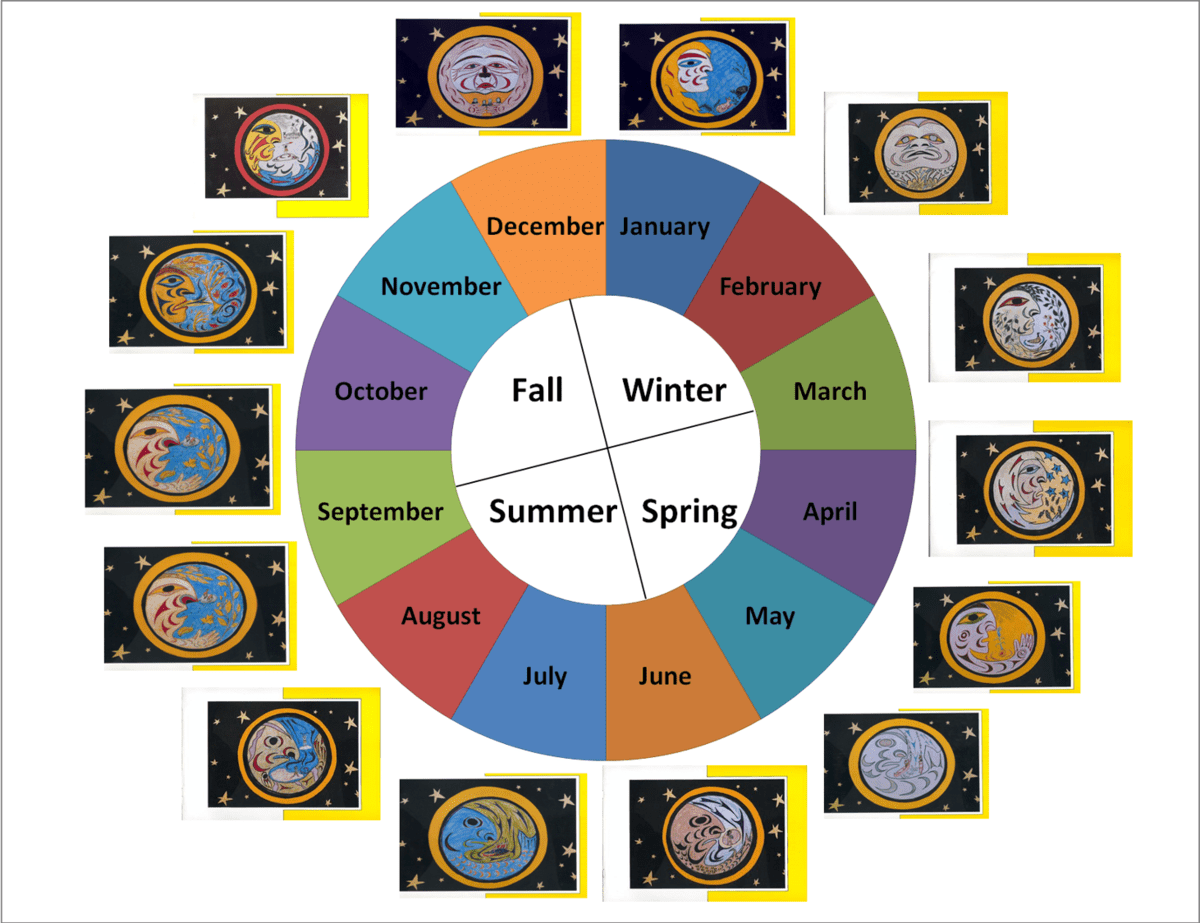
Saanich Moons, which are representative of the seasonal round in the Saanich area, and 4 months are named for different types of salmon. Most Aboriginal cultures had named moons to represent what was found in nature in their territory and needed to survive and live a healthy life.
Aboriginal Moons kit with the Saanich Moons book included can be found at LRC
And you can also use this powerpoint and see link for information about each month.
The Saanich Year
Strength of the River – Laxwesa Wa
(Film found in SD71 LRC)
A film by Barb Cranmer is 54 minutes long. Excellent source for demonstrating how important salmon and the fishery is to Indigenous people today and in the past.
As distinct fishing societies of great spiritual, cultural and economic wealth, First Nations have always respected the resources of their rivers and oceans. But within their own lifetime, they have watched governments “manage” the fishery into a state of crisis. Now it’s time for people to listen to what Natives have to say. Filmmaker Barb Cranmer, a member of the ‘Namgis First Nation, explores the rich fishing traditions of the Sto:lo Heiltsuk and ‘Namgis peoples of Canada’s West Coast in Laxwesa Wa – Strength of the River. With over fifteen years’ experience fishing Johnstone Strait with her father, Cranmer presents rarely heard stories of traditional fishing practices and documents Native peoples’ efforts to build a sustainable fishery for the future.
Kwak’wala and Sliammon words for Salmon
Found in the attached PowerPoint with audio embedded. Words found from First Voices. Kids love practicing these words!
First Salmon Ceremony and Front Loading Drama Strategy
The above document contains the story, First Salmon Ceremony.
Salmon Puppet
Great for retelling of the story afterwards. For easier cutting for the little ones, fold the salmon paper first, then cut a bubble/circle around the salmon instead. Glue only on one side of paper only and a little bit on the stick for easier line up on popsicle stick.
Split Salmon Design by Butch Dick
Salmon Ceremony Powerpoint
by Shannon Campbell from the Sto:lo Nation
Salmon Forest
For the science aspect on the health of a salmon forest, see this article: Pacific Underwater: Salmon don’t grow on trees, but trees grow on salmon.
Or this case study,
Case Study Why Trees Need Salmon
Salmon and the Forest: David Suzuki speaks of the interconnectedness of organisms in the pacific northwest.
Hell’s Gate Disaster
Hell’s Gate Disaster (an article from the First Nations: The Circle Unbroken Video Series Teacher Guide) – carelessness, greed nearly destroyed salmon run: rock slides caused by railway construction blocked the Fraser River at Hell’s Gate.
First Nations: NFB The Circle Unbroken Videos can be found through the LRC.
On video 6 find the two films: Strength of the River: Fishing the Fraser River and Strength of the River: Fishing on the Coast.
Seasons
Seasonal Changes in the Comox Valley from Project Watershed
Click here for connection to seasonal changes video n the Comox Valley and here for more educational lessons and resources from Project Watershed.
Here is an example: The fall video, “I Feel Like Gold” Autumn in the Comox Valley from Island Soul Films.
My Seasonal Round Resource
This unit illustrates the integration of Social Studies and Science. The seasonal round was chosen as a theme for this unit because it lends itself well to integrating the topics of BC First Nations study in Social Studies, and habitat in Science.
A seasonal round: also known as the annual round … refers to the pattern of movement from one resource-gathering area to another in a cycle that was followed each year. Spring, summer and fall saw the people moving to a variety of resource areas while during the harsher winter they gathered in winter villages. The abundance of resources also determined how often people moved. In areas that had a greater abundance of variety, people could stay in one location for longer than in areas where resources were scarcer. Campbell, Kenneth, Charles Menzies, and Brent Peacock. B.C. First Nations Studies. BC Ministry of Education, 2003, page 25
The topic of the resource is the seasonal rounds in the four geographic regions of BC, through the perspective of Aboriginal groups (past and present) who live in these regions. Topics that will be explored include:
- habitat
- natural resources
- stability and change
- living and non-living components of habitats
Ojibwe Four Seasons Video Series – found in SD71 LRC
An excellent series of 4 videos of about 9 minutes each that is combination of a historical re-enactment and the connection to modern day seasonal activities.
Ojibwe Fours Seasons Website – Lessons, resources, more information
We did find the videos online:
Ojibwe Four Seasons Video Review
Stories from the Seventh Fire Video Series – found in SD71 LRC Winter/Spring and Summer/Fall
“This series is the superb achievement of a unique and powerful collaboration. Gifted Native North American artists, animators, storytellers, actors and filmmakers have lovingly produced these animated legends for our new era, for all to share. World-renowned Ojibway artist Norval Morrisseau’s paintings come alive with beautiful animations of Wesakechack, and the legends are narrated by actor and storyteller Tantoo Cardinal.”
DVD 1: Spring – The First Spring Flood; Legend of the Giant Beaver
DVD 2: Summer – How Wesakechak Got His Name; Legend of the Caribou
DVD 3: Autumn – Wesakechak and the Medicine ; Legend of the First Thanksgiving
DVD 4: Winter – Why the Rabbit Turns White; Legend of the Spirit Bear
Aboriginal Calendars – Moons and the Seasonal Round
Saanich Year – calendar based on the the 13 moons of the Saanich people. The year follows the cycles of the moon and the connection to nature and resources availalbe in that area at that time.
“Aboriginal calendars are lunar calendars that are logical in a culture in which people are acute observers of nature. The preciseness of keeping track of important yearly events does not rest on an accurate lunar calendar, but with the people’s acute observations and rich knowledge of nature. An Aboriginal calendar does not need to be precise, just good enough for reasonable communication.” — from guide.
This website has some lessons, pictures and resources for you to use : 13 Moons of the WSANEC (Saanich people) .
The book is no longer in print and we have been given permission to reproduce the book. In SD71, you can find the book in our LRC, search for: Aboriginal Moons.
Or we have put it in a powerpoint.
The Saanich Year
The Saanich Year Book
Primary Moon/Seasons Lessons – locally developed in SD71
Melissa Litke adapted the moon lesson for Kindergarten using the Saanich Moon cards:
Handouts: Connection Sheet
Lets Connect Primary Moon Handout
Other Moon/Seasonal Round Books:
Thirteen Moons on Turtles Back and Maple Moon
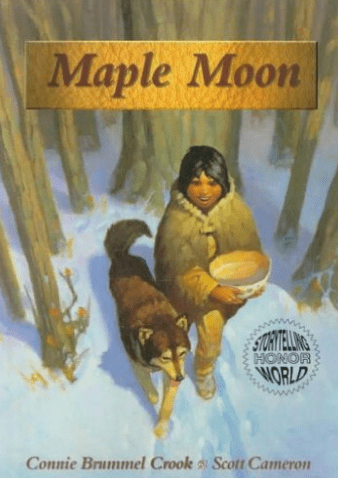
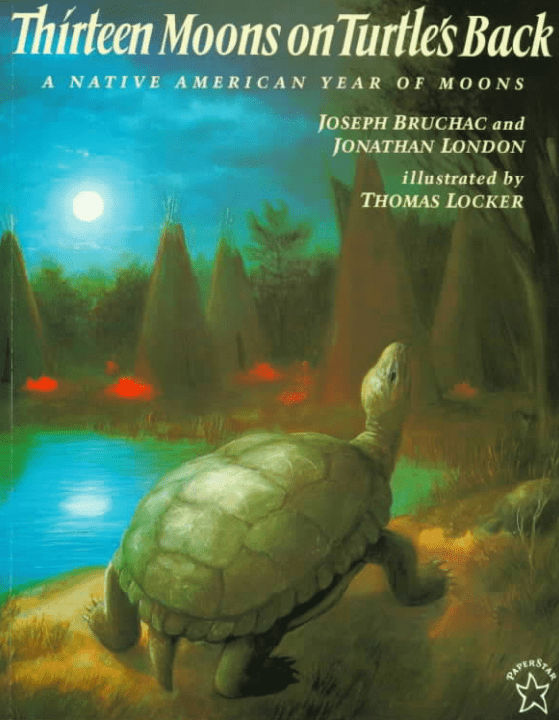
Lunar Calendars across North America:
See the following document for Moon Names in a variety of Indigenous cultures. You can get an idea of how widespread the seasonal round is and how the connection to land and resources was paramount.
A Season’s Unit Outline – rough notes
Look here for an example of how you can use some of the above resources in a unit. Originally meant for grade 1 but can be used at any level.
Solomon’s Tree – a connection lesson using Adrienne Gear’s Power of Reading
Seasonal Activity Lesson
The lesson focuses on making connections between what we do in the seasons and what different groups of First Nations people did during the seasons.
Grade: 2-3
Learning Intentions:
To understand what activities indigenous people do in each of the seasons and why. To read a book and make connections to what we do during the various seasons. To take a walk through the forest to see signs of Fall
Lesson Plan:
Blackline Masters
Other Resources
Supplementary Activities from the author:
- Mouse Writing Lesson Plan Step 1 and 2
- Mouse Writing Lesson Plan Step 3
- Mouse Writing Lesson example of Step 3
- Aboriginal Seasonal Activities
- Seasonal Foods
BLM’s of Signs of…Spring, Winter, Summer and Fall:
Using all your senses record certain plants and places that you visit in the various seasons.
Mouse Celebrates Winter Solstice
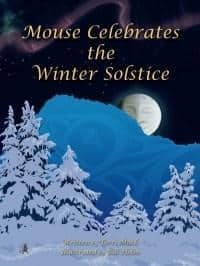
Lesson Description: In this lesson, students gain an awareness of the importance of Winter Solstice to Aboriginal people by reading the picture book, Mouse Celebrates the Winter Solstice, by Terri Mack and participating in a connection reading strategy focus.. Students can also paint or draw their visualization.
Grade: targeted K-3, but could be used for older grades too.
Learning Intentions:
- I can make connections to the Winter Solstice.
- I can make personal connections to the story.
Lesson Plan:
Taan’s Moons – Found in all SD71 libraries
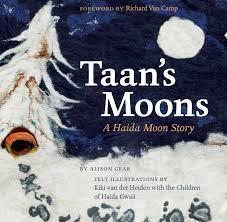
Taan’s Moons from ArtStarts in Schools on Vimeo.
Great Bear Sea Rainforest
The Exploring the Great Bear Sea Elementary, Secondary and Post-Secondary Curriculum Resources are based on the film The Great Bear Sea: Reflecting on the Past, Planning for the Future by Green Fire Productions, and can be used to engage students in an inquiry-based, educational journey through the Great Bear Sea exploring a variety of themes such as Indigenous Knowledge, collaborative science, marine planning, biodiversity, sustainable resource management and marine stewardship. Students explore the importance of this region of BC – and our connection to both land and sea – through place-based stories, traditions and histories, bringing a diversity of First Peoples’ perspectives from this region into the classroom.
Weaving
Introduction Lessons for Cedar Weaving
Driving Question: How does learning about weaving help us to learn about its significance to indigenous people? What is important about weaving to indigenous people?
Learning Targets: Thinking critically; making meaningful personal connections; inferring from images/art expression; connecting and engaging with others to share and develop ideas.
Toni Frank – First Nation Cultural Art Showcase
Toni describes her love and passion for art and cedar weaving. Toni is a member of the K’omoks and Sechelt First Nation.
Quarterbag Weaving: Coast Salish Weaving
We have videos prepared with Suzanne Camp, retired Indigenous District Cultural Support Worker, to explain and demonstrate how to weave quarterbags. Thanks to the Anjeanette Dawson and Norman Guerrero from who we learned the quarterbag weaving at FNESC (First Nations Education Steering Committee) Conference.
For SD71 employees we have 4 instructional videos in which Suzanne Camp explains the weaving process step by step and a written explanation, from Anjeanette and Norman, of how to weave the bags and some Skwxwú7mesh Snichim (Squamish) language . Please contact anyone from the Indigneous Education Department and they can help you find these videos and files.
The Story of the Coast Salish Knitters
For almost a century, the Coast Salish knitters of southern Vancouver Island have produced Cowichan sweaters from handspun wool. These distinctive sweaters are known and loved around the world, but the Indigenous women who make them remain largely invisible. Combining rare archival footage with the voices of three generations of woolworkers, The Story of the Coast Salish Knitters tells the tale of unsung heroines–resourceful women who knit to put food on the table and keep their families alive. Written and directed by Métis filmmaker Christine Welsh, this is a story of courage and cultural transformation–a celebration of the threads that connect the past to the future.
Archaeological find shows 3,000-year relationship between dogs and B.C. First Nation
CTV News: VICTORIA — Humans have a long relationship with dogs, but now after a recent archaeological dig in the Broken Group Islands on the west coast of Vancouver Island, we’re beginning to understand how far back that relationship actually goes. The number is quite staggering.
Remains of an ancient woolly dog breed were unearthed in 2018 during an archaeological dig at an ancient Tseshaht First Nation settlement on Keith Island.
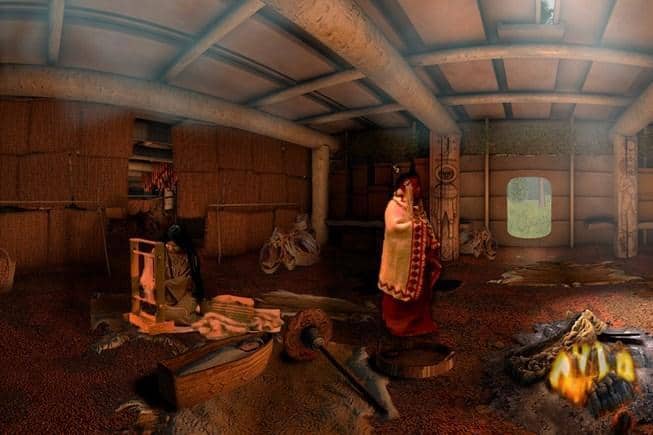
“A Journey Into Time Immemorial is an original creation of the SFU Museum of Anthropology and Ethnology with active participation from local Sto:lo Elders and knowledge keepers. It was originally a Virtual Museum of the Sto:lo people. Given it was created in 2008, the program platform became outdated. This valuable resource is now offline. SFU did give permission to download the information, thus to save as much of it as we could. This page is an archive of information from this website to be used for educational purposes.”
Cedar Weaving
Harvesting Cedar
Special Note: There are protocols that go with collecting cedar bark. Some things to consider about cedar collection is that the people who collect cedar are from the local nation, have been taught from an elder, know how and when to do this without harming the tree in that specific area. Cedar is considered sacred for many.
Cedar bark harvesting from Lonnie Wishart on Vimeo.
Cedar Weaving – Squamish Lil’wat Cultural Centre
Watch as QúQú Héy Yóóch — “Bernadine Billy”, Txwolt’malh — “Holly Joseph” and n̓án̓attw Nkakúsene — “Tanina Williams” work with inner cedar bark, a simple yet effect craft that all guests have the opportunity to practice and take home with them.
Story of Cedar, Cedar Hat Weaving & Bark Pulling Cowichan Coast Salish
From the moment of birth to the time of passing, cedar has traditionally played a vital role in the life of the First People of the Pacific Northwest.
This 30min documentary tells the story of cedar, how the bark is stripped from the cedar tree and prepared for cedar weaving (hats) and discusses the art of cedar weaving and the effect this workshop had on the participants. The project was facilitated by Maria Sampson. The video was produced by Louise McMurray and the Cowichan Aboriginal Film Festival and directed, shot and edited by Phil Ives.
Atlatl
Atlatls in the Comox Valley
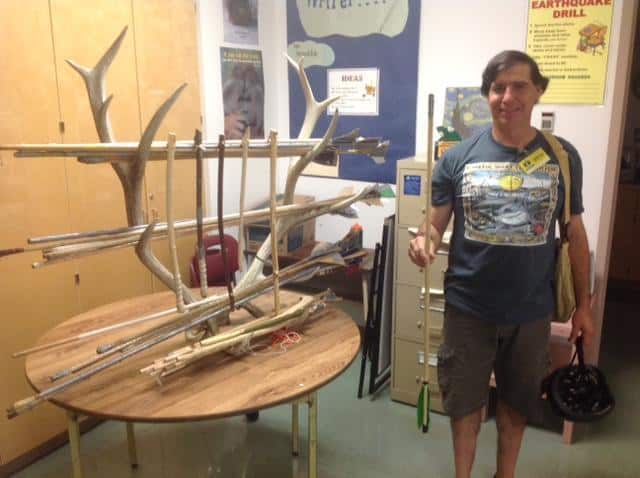
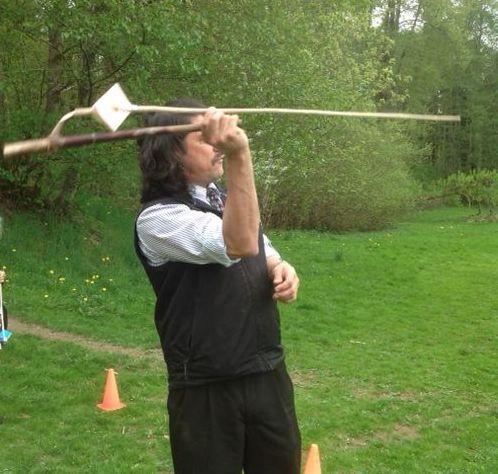
Atlatls, Spear Throwers, and Woomeras
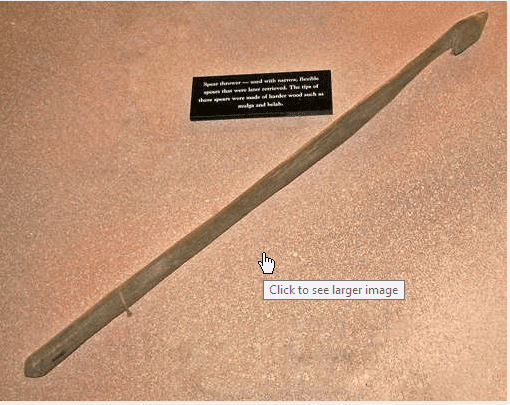
Alberta’s Ancient Darts and Atlatl Hunting
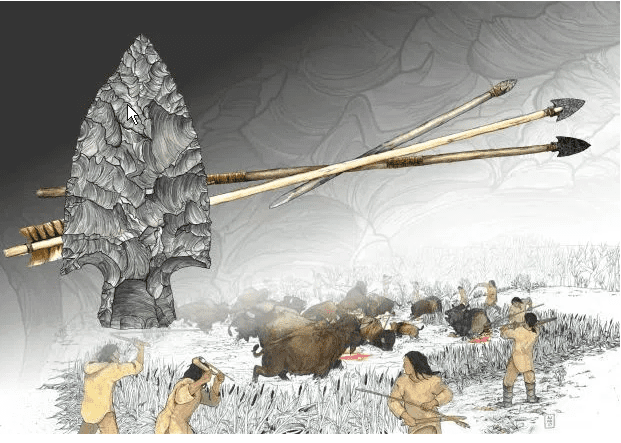
Clovis Point Discovery improves understanding of BC First Nation’s History – article
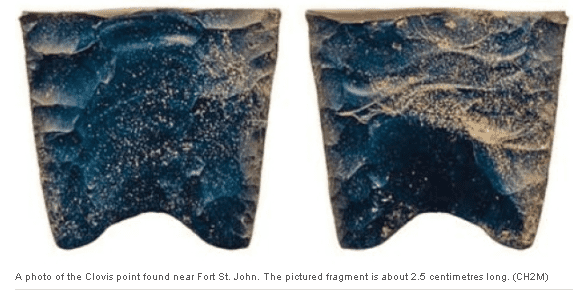
Big Houses
Meet a Local Legend: The Kumugwe Dancers
The video below highlights two of the youth, Jesse and Matthew Everson, from the Kumugwe Dancers and K’omoks First Nation.
SD71 K’omoks First Nation Big House Experience
Excerpts and explanation of the actual day
Big House explanation by Andy Everson
Big Houses of the Northwest Coast – 3 types
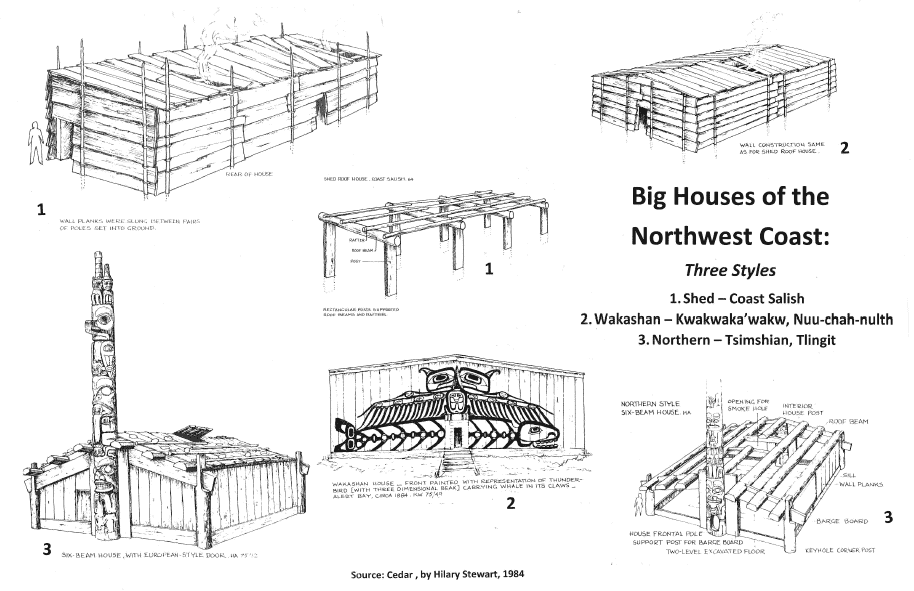
Big Houses of the Northwest Coast
Instructions to make a paper Big House – Coast Salish style and Kwakwaka’wakw style
Transforming your Thinking:
What I used to think about Big Houses, What I now know about Big Houses
The Kumugwe Bighouse
An informative article about The Kumugwe Bighouse written by Keisha Everson.
Grade 4 Big House Experience
SD71 K’omoks First Nation Big House Experience
Excerpts and explanation of the actual day.
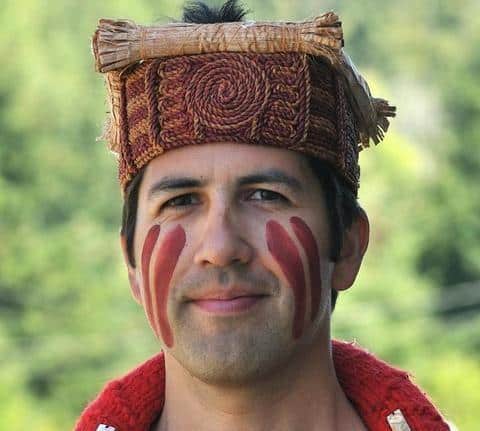
Andy Everson
Andy Everson was born in Comox, BC in 1972 and named Na̱gedzi after his grandfather, the late Chief Andy Frank of the K’ómoks First Nation. Andy has also had the honour of being seated with the ‘Na̱mg̱is T̓sit̓sa̱ł’walag̱a̱me’ name of Ḵ̓wa̱mxa̱laga̱lis I’nis.
Big House Experience Pre-Teaching Lesson 1
Lesson 1 Materials
- K’ómoks First Nation Lesson 1 (PDF)
- K’ómoks First Nation Thinking Sheet (PDF)
- Lesson 1 Slide Notes (PDF)
Big House Experience Pre-Teaching Lesson 2
For more information:
Activating Prior Knowledge for Big House Experience
These are some ideas for introducing the local K’omoks First Nation culture to students. They can be done prior to lessons for the Big House Experience, or in conjunction with a number of other lessons focused on West Coast Aboriginal content.
This kit is designed to help students determine importance. Normally you determine importance as you read or after you read, but this kit features before reading activities that tap into background knowledge, get kids using non-fiction text features, and develop content-specific vocabulary. Please add your favourite “after reading” graphic organizer once the strategies in this kit have been tried.
K’omoks First Nation’s Big House Experience preteaching BLM’s
These are some ideas for introducing the local K’omoks First Nation culture to students. They can be done prior to lessons for the Big House Experience, or in conjunction with a number of other lessons focused on West Coast Aboriginal content
The K’omoks Big House Exeperience is hosted by the Kumugwe Dancers who share their culture and knowledge with all the Grade 4’s in SD71 Comox Valley District. The video below highlights two of the youth, Jesse and Matthew Everson, from the Kumugwe Dancers and K’omoks First Nation.
Meet a Local Legend: The Kumugwe Dancers
Kumugwe Cultural Society
Check out the Kumugwe Dancers website, Kumugwe Cultural Society for more background.
Click here to browse their stunning collection of traditional and contemporary Northwest Coast artwork and crafts, produced by featured First Nation artists.
History of the I-Hos logo – click here for more information on the logo.
Poles in Front of Administration Building - for more information on these poles – have a look at the following video.
Find out more about the potlatch here:
Living Tradition: The Kwakwaka’wakw Potlatch on the Northwest Coast
Big House Explanation by Andy Everson
Fish Traps
Fish Trap Experience Video by Fox and Bee Media
Visiting the Fish Traps
The SD71 Indigenous Curriculum Support Teachers, with permission from the K’omoks First Nation, have a limited number of spaces to take classes who have been working on curriculum that would connect to this local wonder on a tour. This page has some great background information and lessons plans to prepare your class. Please see following link for low tide times that are compatible to school hours and for other pertinent information. Fish Trap Visit Times.
Caretaking of the Land – information for your visit.
We have been graced permission and support from the K’omoks First Nation to teach about the fish traps to classes that come down to the harbour. Ideas to the K’omoks First Nation that are important and put into practice are sustainability, respect and care taking of the land. Could you please talk to your students about this same practice while visiting outdoor areas and while on this tour. If you could specifically ask students to tread lightly on the shoreline, leave everything in its place, especially the small crabs (leave them on ground, do not step on them or poke them with sticks) that they will see when on the harbour.
Also we find a reminder about what outdoor learning looks like and sounds like would be great and how that would look different than free beach time playing, which perhaps could be given before or after the fish trap tour with us.
Thanks all for helping to ensure that this is a successful and meaningful visit.
In most school libraries, you will find the book called, Orca Chief, by Roy Henry Vickers. It would be an excellent book to discuss with your class about respecting the environment.
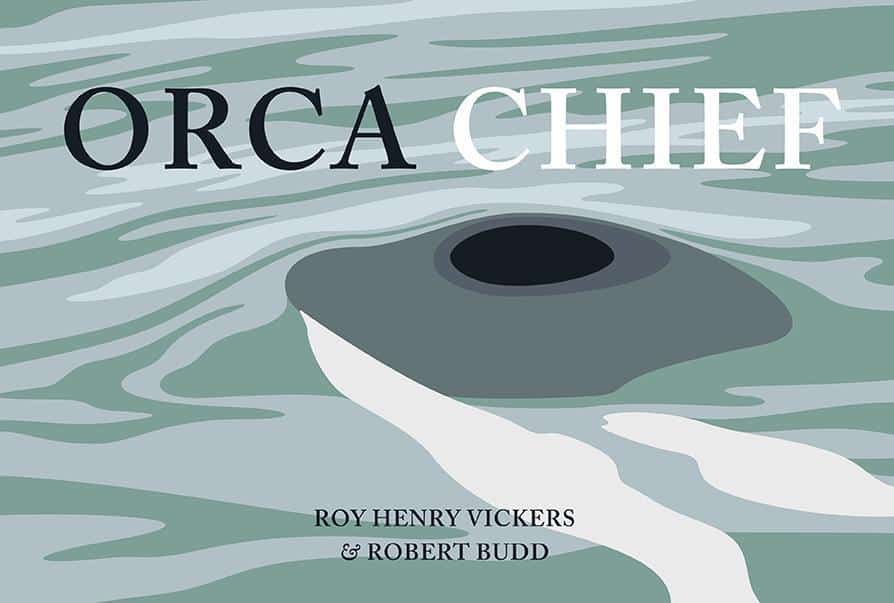
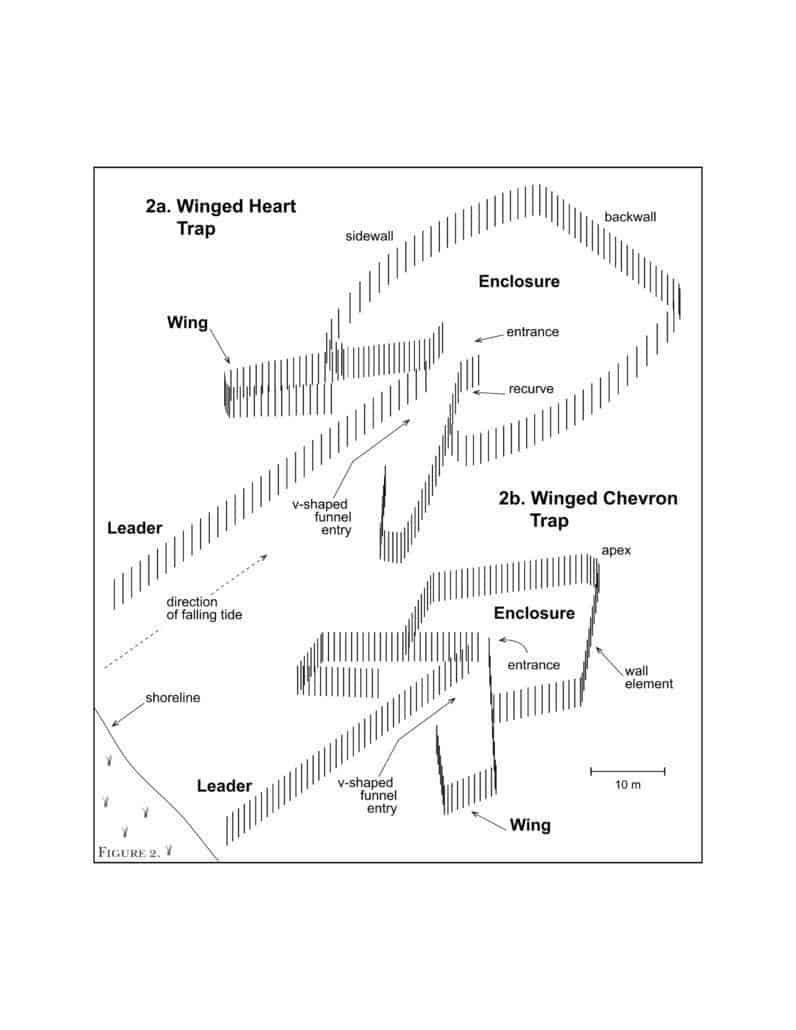
For more information about the traps, check out Project Watershed’s site:
The Comox Harbour fish trap complex, a large-scale, technologically sophisticated intertidal fishery from British Columbia
The information on this page comes from Comox Valley Archaeologists Nancy Greene and David McGee view their full report here.
Results of highly detailed mapping and radiocarbon dating at a vast and largely unknown intertidal fish trap complex indicate a large-scale, technologically sophisticated Aboriginal trap fishery operated at Comox Harbour, Vancouver Island, British Columbia between about 1,300 and 100 years ago…
Pre-Teaching Lessons
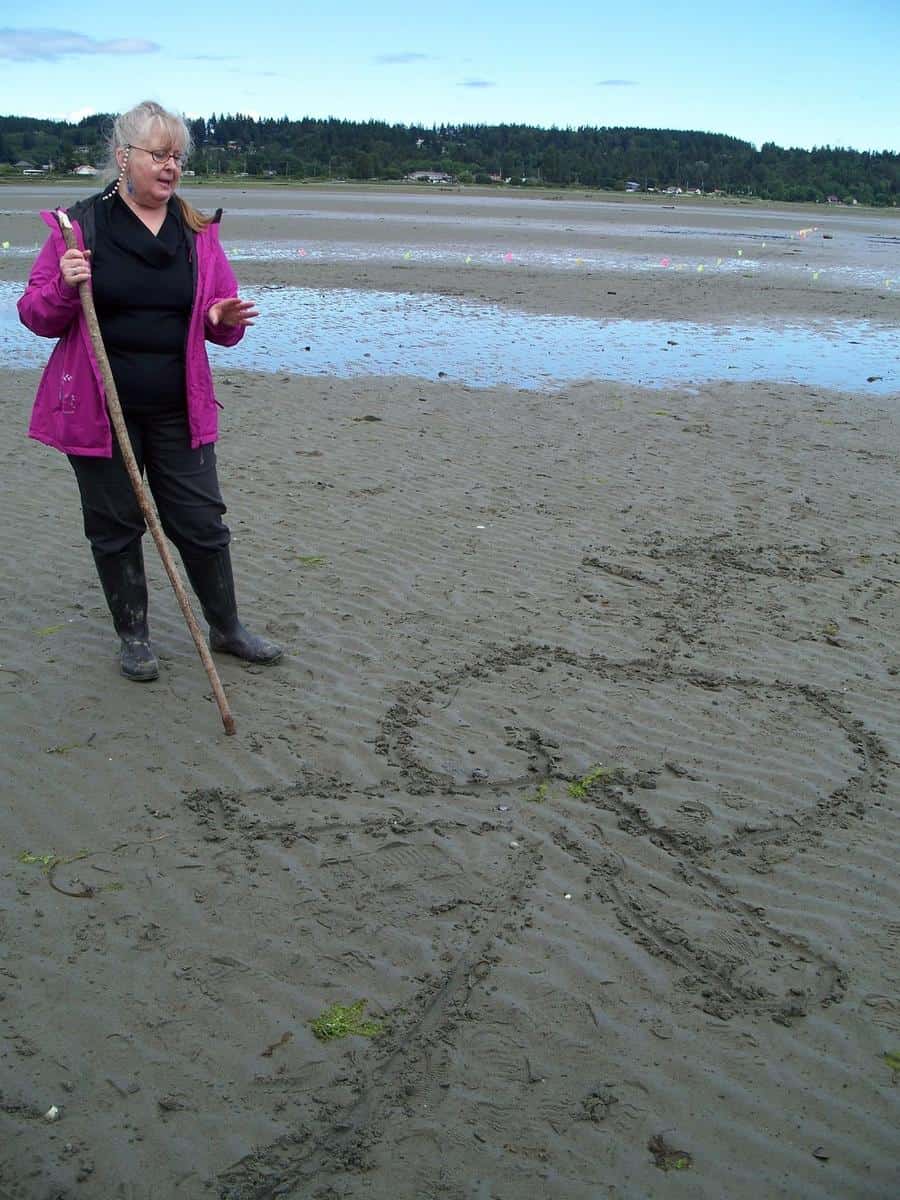
Lesson 1:
Supporting Materials:
Lesson 2:
Supporting Materials:
K’omoks Estuary: A Cultural and Archeological Treasure video – see below
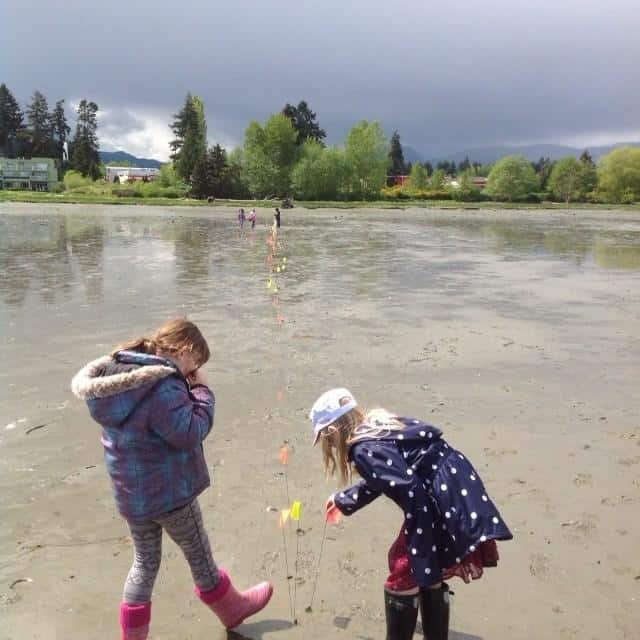
A Visit to the Comox Harbour and Fish Traps Lesson
Tour Talking Points
A reflection on that visit example…
Nancy Greene, Archeologist:
Understanding Aboriginal Fisheries In British Columbia website from Indigenous Foundations UBC
Includes:
Fishing Since Time Immemorial, Coast Salish Harvesting Methods, The introduction of canneries and a wage-based economy, The creation of an Aboriginal “food fishery”, Aboriginal fisheries in the courts: Sparrow, Van der Peet, and other legal challenges, Not a “race-based” fishery.
The K’omoks Estuary Speaks
Kus-Kus-Um – Unpave Paradise Project
by Jessica Speck – a journey spearheaded by project Watershed to restore the old Fields Sawmill site back it nature to help preserve the Comox Valley estuary and it’s diverse eco-system.
K’omoks Estuary: A Cultural and Archealogicial Treasure
Fishing
A model display made by Project Watershed Society
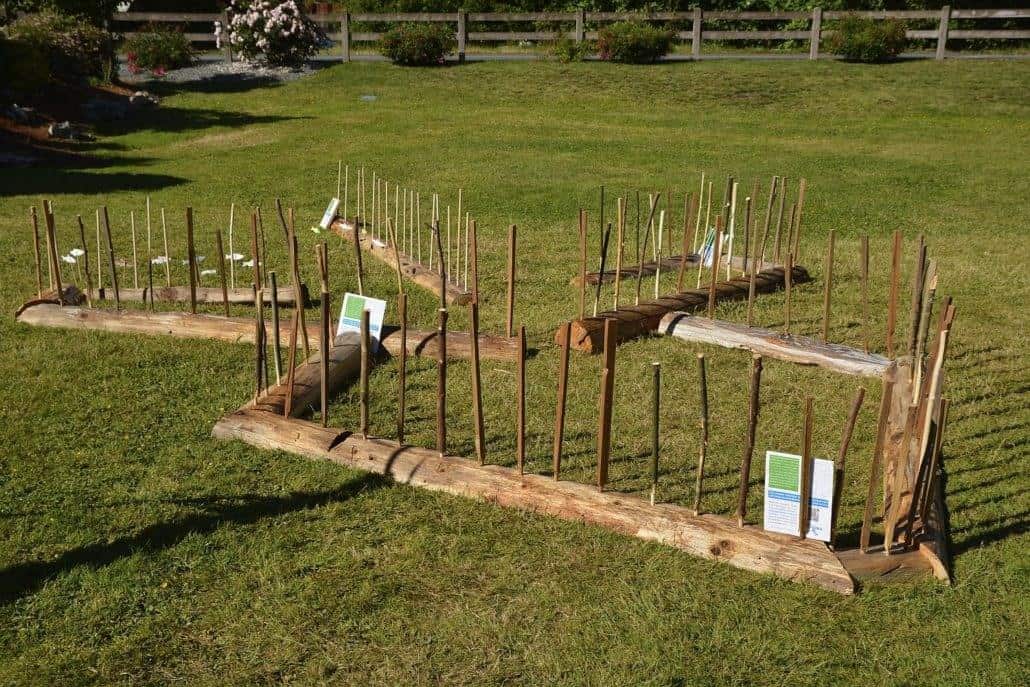
Fishing Practices and Sustainability Inquiry Lessons
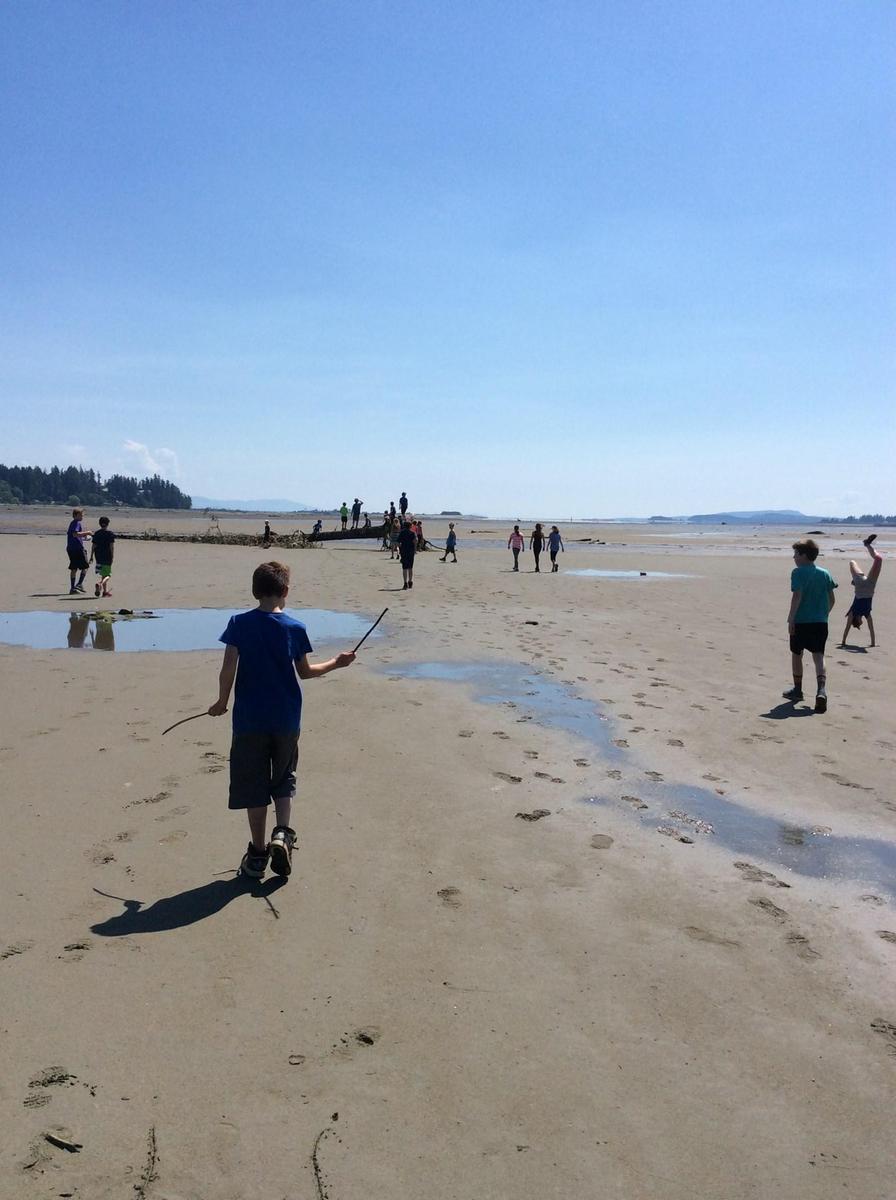
Salmon
”It’s hard to quantify the enormous impact a simple fish has had on the Aboriginal people of British Columbia. But the salmon has been a vital part of First Nations diet, economy and mythology for centuries.” (from Aboriginal Tourism BC – Meet a Local Legend)
Eulachon Fishery
Watch a Fish Transform From Animal to Candle
July 10, 2015 – The last great eulachon fishery on Earth is found in British Columbia near the mouth of the Nass River, where the fish return to spawn each year. Eulachon are a species of smelt, known to the indigenous Nisga’a people of the Nass as halimotkw, which translates to “salvation fish.”
Both a foodstuff and a delicacy for the Nisga’a, eulachon today are showing signs of making a comeback after their runs began to collapse in the 1990s. In this video, we get a look at Nisga’a processing the eulachon inside the “stink box,” where the fish ferment in vats, and grease from its fatty skin is created. The eulachon’s buttery flesh is so rich in oil that a dried fish will actually light and burn like a candle.
Check out this article for more information about the fishery in Northern BC:
‘Salvation Fish’ That Sustained Native People Now Needs Saving
Traditional fishermen lead the fight to bring back a species that has an outsize role in nature and culture.
Herring Fishery
Herring Hazards
Wild Chronicles dives into a big fish story. While the fish themselves may not be large in size, a herring’s importance as a source of food in the ocean is bigger than people know.
Fur Trade
Thinking Sheets
What is important about the Fur Trade?
Abundance of Resources in Canada
HBC Beaver Trade Animation from Kelly John Rose on Vimeo.
HBC Point Blanket Animation from Kelly John Rose on Vimeo.
- Includes a learning Centre and many teacher resources including the HBC Hamper section below.
- Information, pictures, short video clip of the history of the Hudson’s Bay Company and the fur trade in Canada.
Teacher Resource Guide:
Fur Kits
There are kits in our LRC that have fur samples in them. For SD71 staff, search Fur Trade Kit in Destiny.
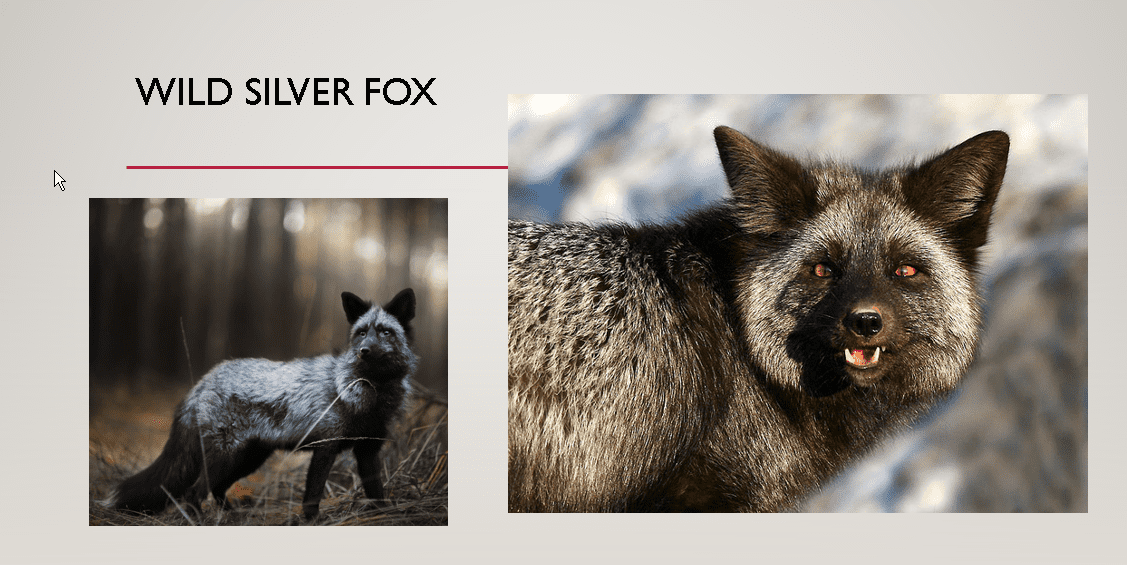
In the following PowerPoint you will find some of the animals that people gathered furs from Animal Furs
Governance
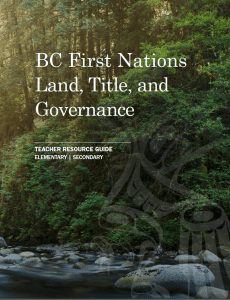
FNESC: BC First Nations Land, Title, and Governance Teacher Resource Guide (2019)
The BC First Nations Land, Title, and Governance Teacher Resource Guide is intended to provide support for teachers and students in all BC schools, including First Nations, public, and independent schools, to gain an understanding of traditional and contemporary forms of First Nations governance. It provides background information relevant to all teachers and students, and provides suggested activities and resources for Grades 2 to 12.
This guide is also intended in part to address the Calls to Action of the Truth and Reconciliation Commission of Canada, particularly the call to “integrate Indigenous knowledge and teaching methods into classrooms” and “build student capacity for intercultural understanding, empathy and mutual respect” (clauses 62 and 63).
Go to the Full PDF (the sd71 Print Shop will print this out for your own copy)
Aboriginal History Did you Know?
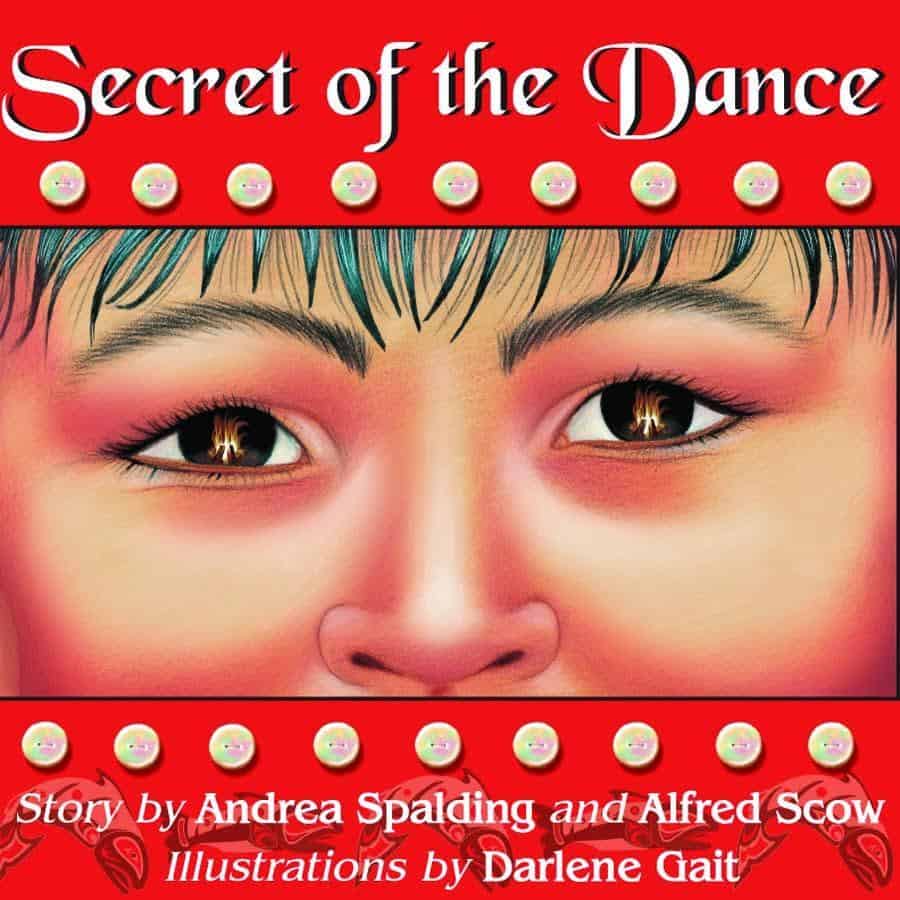
Secret of the Dance Lesson Plan
PowerPoint and lesson created Colleen Devlin, SD71 teacher
Click here for PowerPoint and lesson
Land and Resources Connection
Learning Intentions:
- I can form an opinion and support it with my reasons.
- I can listen to information from various perspectives to help me form my opinion.
- I can understand why Aboriginal people have a voice in the decision
Lesson Plan and Thinking Sheet:
Created by Lynn Swift, Debbie Nelson and Gail Martindale
Nisga’a Legends of the Nass
Toggle Content goes here
Tools and Tech
Hozameen: A story about chert, identity, and landscape
Hozomeen chert is a locally abundant and distinctive tool stone found exclusively in the northern Cascade range of Washington and British Columbia. Over the last two decades, archeologist Bob Mierendorf has studied quarries near today’s Ross Lake reservoir that reveal a 10,000 year long record of indigenous involvement with this rugged, high-mountain landscape. The word Hozomeen means “sharp, like a sharp knife.” Its story cuts across time and place, cultures and borders, archeology and oral histories, connecting us all as human beings. As Bob says, we’re all descended from people who used stone to make their tools. “It’s what put food on the table for thousands of years.” Produced by: Benjamin Drummond and Sara Joy Steele, bdsjs.com Funded by: Skagit Environmental Endowment Commission
Atlatls are ancient weapons that preceded the bow and arrow in most parts of the world and are one of humankind’s first mechanical inventions. The word atlatl (pronounced at-latal or atal-atal) comes from the Nahuatl language of the Aztec, who were still using them when encountered by the Spanish in the 1500s. From World Atlatl Associaton
“From the mighty cedar of the rainforest came a wealth of raw materials vital to the early Northwest Coast Indian way of life, its art and culture. For thousands of years these people developed the tools and technologies to fell the giant cedars that grew in profusion.” Hilary Stewart, Cedar
First Nations managed a vast, highly-productive, industrial-scale fish harvesting complex in the estuary of the Courtenay River. At first, the elaborate arrangement of 300 ingenious traps on the sandy flats of the river mouth harvested herring, which still mass to spawn off the east coast of Vancouver Island every March.But 700 years ago, perhaps in response to climate change, the technology was altered to exploit pink, chum, coho, chinook and possibly sockeye salmon.
Highly coordinated traps equal in technological sophistication to contemporary commercial fishing traps, enabled the operators to regulate escapement of spawning stocks and maintain abundance, precisely the sustainable resource management model we strive for today. (Words from this article)
Book titles – Found in SD71 Libraries
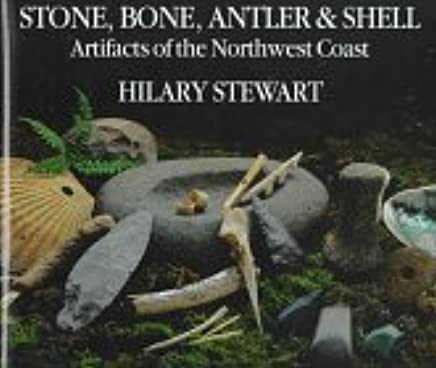
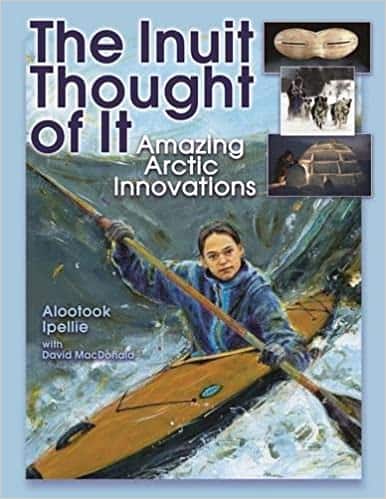
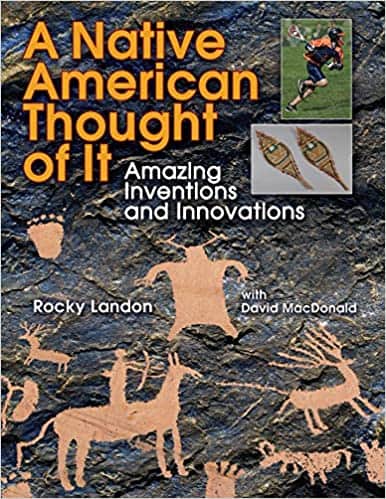
Geology
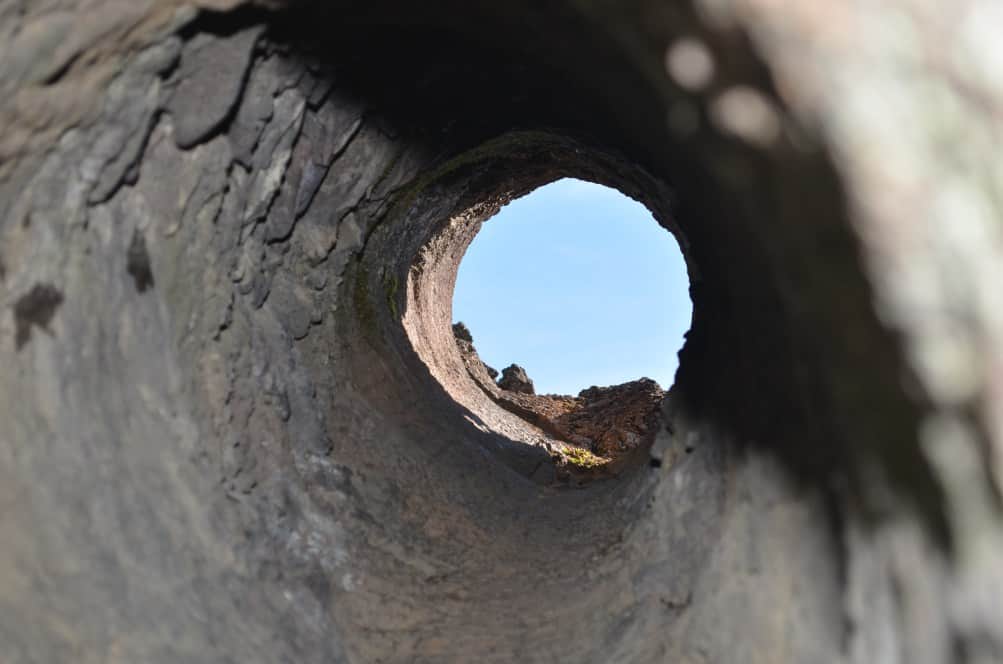
Unique Lava Bed of the Nass Valley, Northern BC, Canada – article

